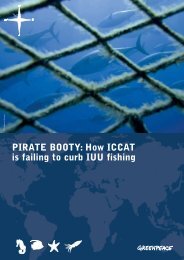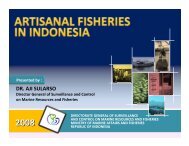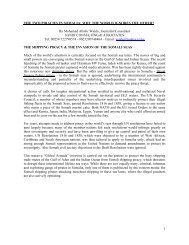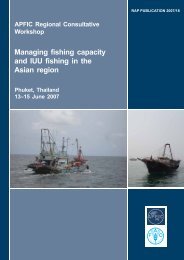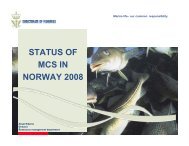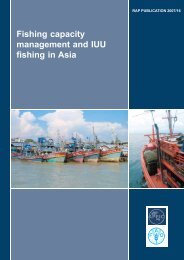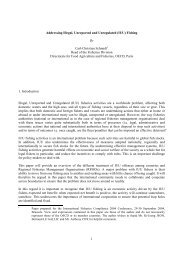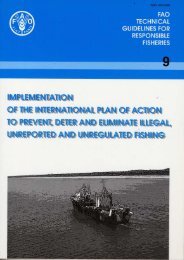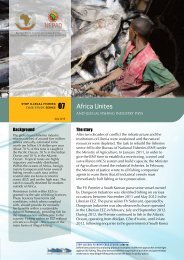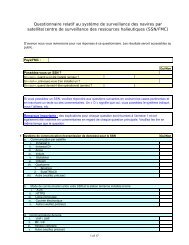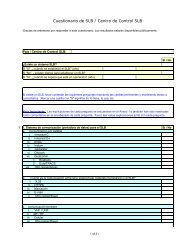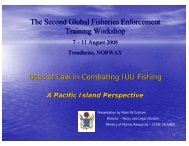Fishing Vessel Monitoring Systems: Past, Present and Future
Fishing Vessel Monitoring Systems: Past, Present and Future
Fishing Vessel Monitoring Systems: Past, Present and Future
You also want an ePaper? Increase the reach of your titles
YUMPU automatically turns print PDFs into web optimized ePapers that Google loves.
VMS: <strong>Past</strong>, <strong>Present</strong> <strong>and</strong> <strong>Future</strong> 25<br />
of his reasoning <strong>and</strong> decision making process into an FMC, as an automated<br />
process, would require an expert to devise schematic rendering of the<br />
movements that each type of vessel might make whilst fishing.<br />
Once done, it would then be necessary to programme a computer to recognize<br />
those schematic renderings, knowing that each one will be, in some way,<br />
different from all the others: variations in speed, length, <strong>and</strong> directions would be<br />
significant. One might even use the analogy of programming a computer to<br />
recognize the h<strong>and</strong>writing or voices of different people. Anyone who has had to<br />
edit a text created by optical character recognition from even a printed text can<br />
begin to underst<strong>and</strong> the complexity of matching unclassified movements to<br />
general visual patterns.<br />
And with all of this complexity, we are still assuming that the data under analysis<br />
is correct. Suppose that the analytical process is applied to determining whether<br />
data might be genuine of falsified. This is a level of analysis that goes<br />
significantly beyond the relatively simple pattern recognition of fishing activity <strong>and</strong><br />
would take the FMC software into areas used by financial institutions when they<br />
are trying to detect fraudulent transactions of, for example, credit cards.<br />
Suffice it to say that in an area such a VMS where the systems suppliers tend to<br />
be very small companies with severely limited research activities, <strong>and</strong> where very<br />
large installations cost no more than $500,000, it is simply unreasonable to<br />
expect that the entities involved underwrite such research using their own<br />
resources. The only solution is that the research be carried out for, say,<br />
consortia of fisheries compliance, protection <strong>and</strong> management entities, or by<br />
publicly funded research <strong>and</strong> development programmes.<br />
4.6 Galileo system<br />
In developing <strong>and</strong> implementing its Galileo satellite communications system, the<br />
European Union is taking head-on what has been until now a monopoly of the<br />
government of the USA. And whilst this competition has serious implications, for<br />
users of satellite navigation systems the implications can only be positive.<br />
Galileo will boast a significant number of advantages, compared to GPS, such as<br />
improved accuracy <strong>and</strong> institutional support, <strong>and</strong> one can expect that the<br />
advantages of these improvements will be routinely integrated into product<br />
offerings by manufacturers of maritime equipment.<br />
But most important, for practitioners of VMS, will be a number of particularities of<br />
the Galileo system that can be used to assure the integrity of retransmitted<br />
position, course <strong>and</strong> speed data. These advantages are of such key importance<br />
that there is every reason to believe that Galileo will become the industry



